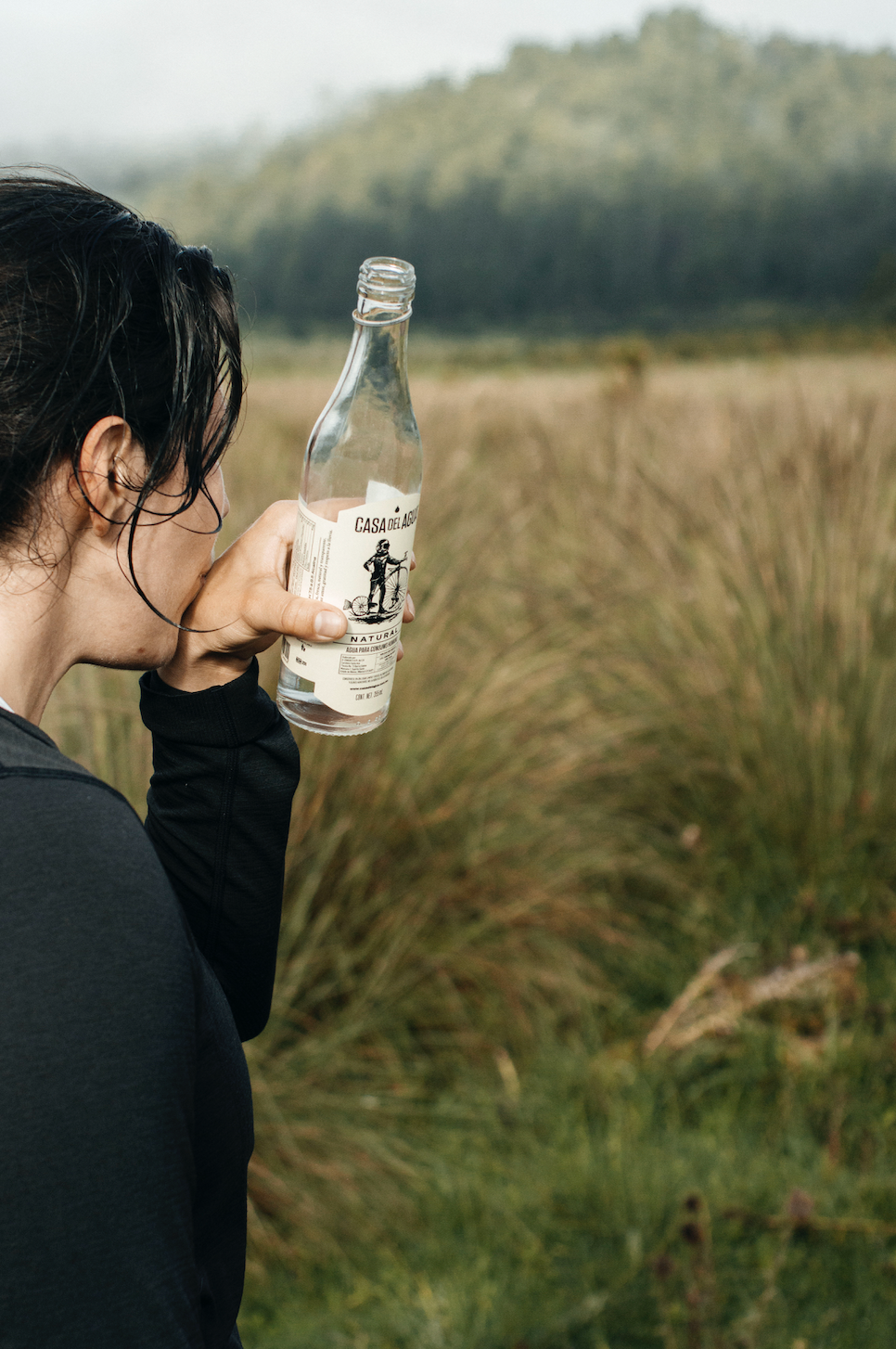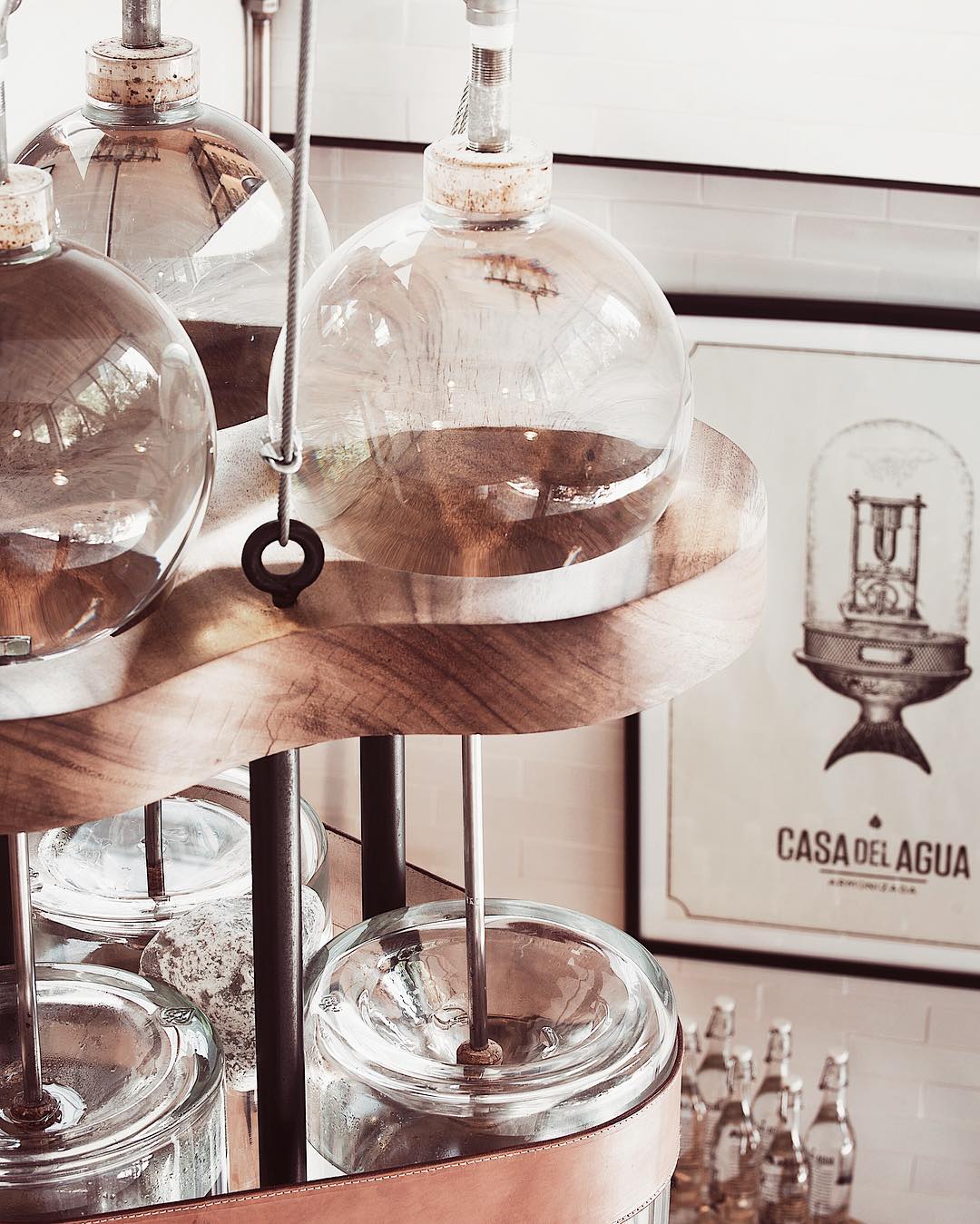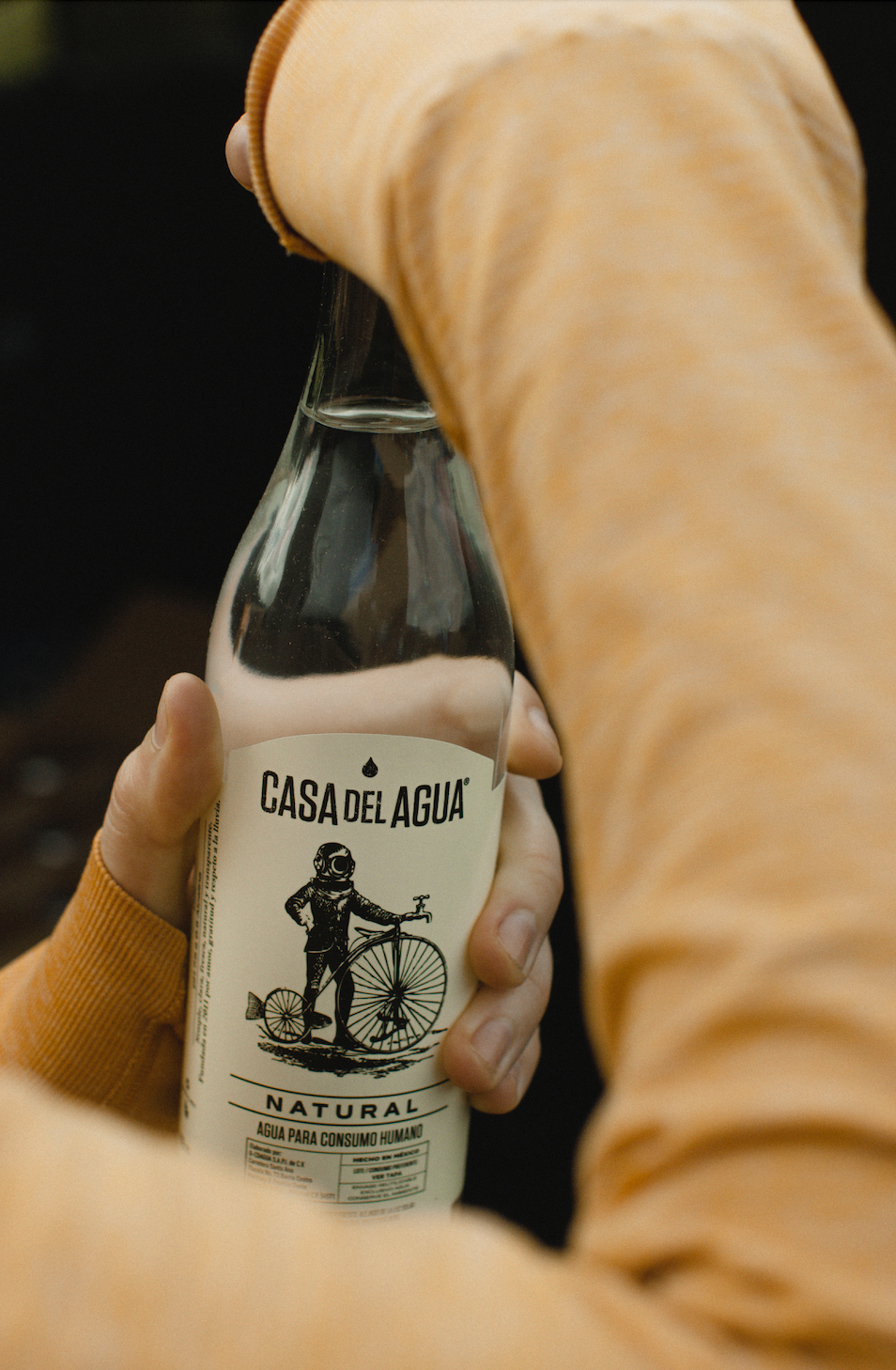Collection, Filtration, Purification, Re-mineralization and Bottling in Glass.
In a world where sustainability and care for the environment are increasingly a priority, rainwater harvesting is positioned as an innovative and environmentally friendly solution. This article describes the process of capturing, filtering, purifying, re-mineralizing and bottling in glass bottles, guaranteeing a product suitable for human consumption and respectful of the environment.
OUR PROCESS

Rainwater Harvesting
The first stage of the process consists of collecting rainwater efficiently and safely. For this purpose, suitable roof surfaces are used to channel it to a storage system through gutters and pipes.
It is essential that these materials are non-toxic and clean to prevent contaminants prior to storage. The collected water passes through a first sediment filter, which removes large particles such as leaves, soil and sand.
Subsequently, it is stored in innocuous, high-specificity tanks, in which a disinfection process is carried out to preserve its quality in this initial phase.

Filtration and purification
Once collected, the water goes through a second filtration process through a silica sand system to be sent to a second storage tank, where it remains before being treated to reach the finished product with the highest purification standard.
The process starts with a triple filtration system, followed by a purification process through nano membranes, also known as ultrafiltration . Reaching 100% purity.
The stages of this process include:
- Silica sand filter: Removes physical impurities.
- Zeolite sand filter: Removes chemical impurities.
- Activated carbon filter: Eliminates odors, flavors and organic substances.
- Microfiltration or ultrafiltration: Retains microorganisms and microscopic particles, guaranteeing water that is 100% pure.

4. Sterilization and bottling
The production line guarantees water safety through technologies such as:
- Ultraviolet (UV) light: Eliminates bacteria, viruses and pathogenic microorganisms in the filling line.
- Ozone: Powerful disinfectant that eliminates any residual biological contaminants in the air space inside the neck of the bottles.
Correct bottling is essential to preserve the high level of purity and quality achieved. For this purpose, high specification automated technology is used in a 100% sterile process.

5. Glass Bottling
Glass bottling is a choice that balances sustainability and quality. Glass bottles are 100% recyclable, do not release chemicals into the water and retain their purity and taste intact.
The bottling process is carried out under controlled conditions to avoid any contamination and includes the following stages:
- Bottle washing and sterilization: Guarantees the elimination of microorganisms.
- Filling and sealing: A system that minimizes water contact with air is used to preserve water quality.
- Labeling: Each bottle receives a label with information on the origin of the water, the process followed and the commitment to the environment.

6. Harmonization
Our processes are accompanied by intention, thought and awareness through written messages and classical music.
BENEFITS OF THE PROCESS
This approach offers numerous benefits:
Sustainability: Harnesses a natural resource locally, reduces carbon footprint and dependence on overexploited water sources.
2.Quality: Our processed water is 100% pure and balanced, making it perfect for its best purpose: human consumption.
3.Reduced environmental impact: Glass bottles are an environmentally friendly option that minimizes the generation of plastic waste.
Conclusion
Rainwater harvesting, combined with sustainable purification and bottling technologies, is a viable and effective solution to today's environmental challenges. This process not only ensures high quality water for the consumer, but also promotes responsible practices for the planet.
Next time you choose any bottled water, consider options that support sustainability and innovation.

